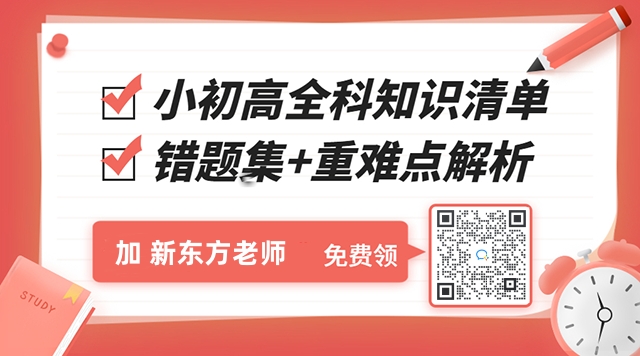新东方在学校小学网整理了春节习俗小百科,希望同学们喜欢。更多内容请关注新东方在线小学网。
春节习俗小百科:腊月二十四 掸尘扫房子
The 24th day of the 12th month in Lunar Calendar: The folk saying goes like 腊月二十四,掸尘扫房子。
腊月二十四日,有俗语说“腊月二十四,掸尘扫房子”。
On this day, each family will thoroughly clean their house. This practice is similar to the modern idea of spring cleaning.
在这一天,每一个家庭都会彻底的清扫他们的屋子,这与现代理念“春扫”有异曲同工之妙。
However, in Chinese folk belief, cleaning up the house does not only for the hygienic reason, but also for a symbolic one.
但是,在中国传统信仰中,打扫屋子并不是仅仅为了清洁的原因,也有一定的象征意义。
In Chinese, the word of dust (尘,chen) shares the exactly same pronunciation of the word of old ( 陈,chen). Thus, 掸尘 (dan chen), or to whisk the dust, symbolises the idea of getting rid of the old and set up the new, or 除陈布新 ( chu chen bu xin).
在中文中,“灰尘”的“尘”与“陈旧”的“尘”有同样的发音,所以“掸尘”也就是“去除灰尘”,就象征着“除尘布新”,“摆脱陈旧迎来新生活”的意思。
As such, it is very important that the floor is swept toward the door as this is symbolic of sweeping away all misfortune, diseases and suffering in the past year which is the ‘old’ year.
因此,扫地的方向一定要向着大门,因为这样象征着把不幸、疾病以及去年也就是“旧”年的苦全都扫
出门外。
After a thorough cleaning, the house will not be cleaned during the beginning of Chinese New Year as this might cause good fortune to be swept away.
在彻底的清扫之后,在中国春节伊始是不会再次清扫的,因为这样会导致好运也被扫走。
The two feather dusters (鸡毛掸子,ji mao dan zi), placed inside the porcelain vase, are used for cleaning up the furnitures and porcelains. But it is not easy to find nowadays mainly because the vacuum cleaner is more common.
在瓷花瓶里面放两只鸡毛掸子,就是用来清洁家具以及瓷器的,但是现在已经不常见了,因为有吸尘器替代。


微信扫码关注免费领取
英语+新概念学习资料大礼包

 推荐阅读
推荐阅读
公告:来自新东方小老师的,免费福利活动!
来源 : 新东方在线 关键字 : 免费福利
微信添加【新东方小老师】免费获得《新概念、剑桥英语》学习资料提示:手机直接加微PC端请扫二维码--------------------------------------
来源 : 新东方在线 关键字 : 新概念英语一二册资料
招生单位所在地(10001)北京大学(11)北京市(10002)中国人民大学(11)北京市(10003)清华大学(11)北京市(10004)北京交通大学(11)北京市(10005)
来源 : 1 关键字 :
7月21日,据河北省教育厅官方微信公众号河北教育发布称,河北省教育厅印发通知,各地各学校加强本轮强降雨天气应对和自然灾害防范工作,各
来源 : 河北教育厅 关键字 : 强降雨天气,河北省,停止线下教学
记者获悉,即日起至8月31日,颐和园、天坛公园、北海公园等北京市属11家公园及中国园林博物馆持续开展一园一品科普品牌活动,发挥市属公园
来源 : 北京青年报 关键字 : 暑期夏令营,公园科普,北京中小学
近日,市教委主任刘宇辉在市民对话一把手节目中透露,本市将结合家长实际困难和需求,对中小学课后服务时间进行优化调整。本市正在考虑通过
来源 : 北京晚报 关键字 : 课后服务,优质课程,中小学,
2021年暑假来临之际,教育部指导全国综合防控儿童青少年近视专家宣讲团,提出2021年暑假中小学生和幼儿护眼要诀,倡导广大中小学生和幼儿假
来源 : 教育部网站 关键字 : 2021暑假,中小学,护眼
7月20日,北京市全面启动12至17岁人群新冠疫苗接种。记者来到门头沟区的接种点,来自首都师范大学附属中学永定分校的中学生正在有序进行疫
来源 : 北京青年报 关键字 : 疫苗接种,北京,中学生
教育部基础教育司司长吕玉刚21日在国新办发布会上说,截至今年5月底,全国10 2万所义务教育学校开展课后服务。近期,教育部作出部署,确保
来源 : 新华社 关键字 : 教育部,中小学,课后服务
7月20日,共青团中央维护青少年权益部、中国互联网络信息中心(CNNIC)、中国青少年新媒体协会在京联合举办网络保护·守护成长主题研讨会,
来源 : 北京青年报 关键字 : 未成年,互联网,
